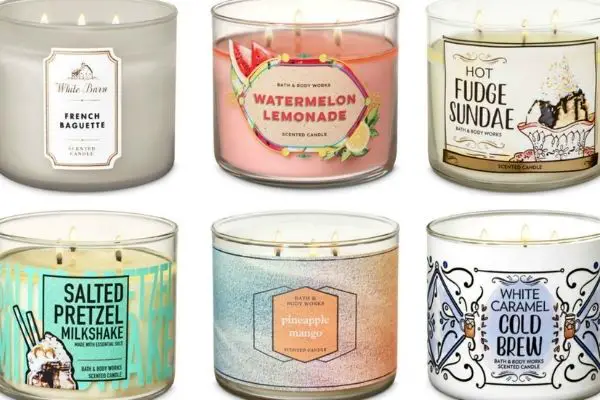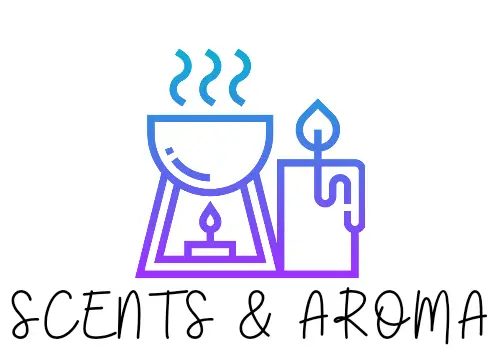With its wide selection of scented products, Bath and Body Works has been dazzling consumers since the 90s. They have lotions, soaps, and candles that provide a soothing scent and a calming effect throughout the house.
However, there is a darker side. Bath and Body Works candles contain chemicals that can be dangerous and toxic. People or pets may suffer health issues rather than a fresh-smelling home if sensitive to these ingredients.
We’re about to dive deep, so let’s get started.
Are Bath and Body Works candles toxic? Candles from Bath and Body Works contain paraffin, synthetics, and chemicals that can be toxic to your health. While these substances make the candle look and smell amazing, they can also cause health problems. For example, several studies have linked phthalates in Bath and Body Works candles to issues including diabetes, liver and breast cancer, infertility, and even attention deficit disorder.
That’s the short and not so sweet answer to your question. So let’s take a closer look at everything so that you can light an aromatic candle with a scent that calms, tranquilizes, and is not harmful to your health like an expensive Bath And Body Works candle
Before we go any further I just want to recommend one of my favourite candles that are actually made of 100% natural soy wax, meaning that they are so much more safer than Bath And Body Works candles. If you would like to take a look click on this link to Amazon (don’t worry it open in a new window) I am sure that you will love it just as much as I do.

Why are Bath and Body Works candles toxic?
Lighting a Bath and Body Works candle can lift your spirits and make your home feel inviting, but what are you inhaling?
Bath And Body Works candles are toxic due to the paraffin wax, but it doesn’t end there. Other chemicals and synthetic ingredients in the candles that make them smell and look appealing also contribute to the air pollution cocktail. They use much the same ingredients as Yankee Candles which are also known to contain toxins.
Yes, we love the aesthetic value of a pretty candle on our desk; we all enjoy the warm glow, the flickering flame, and the enticing aroma, but at what cost?
Regardless of how “clean” a candle maybe, the candle’s purpose is to burn. Therefore, whatever is in the candle will burn off.
Even if it’s a Bath and Body Works candle with a lovely scent, you should not use paraffin candles in your home. Candles made from paraffin wax release toxic and carcinogenic chemicals.
You’re breathing it in if you’re burning it!
When you burn a paraffin candle, a chemical reaction produces gases, and soot is released into the atmosphere. As a result, the combustion produces air pollution since it vaporizes wax and reacts with oxygen. By the way, if you would like to learn which candle wax produces the least soot have a read of this guide.
In this process, many substances are released, some of which are known carcinogens. In addition, the soot from the candles we breathe in then enters our lungs and bloodstream. Eek!
If what you have read so far has freaked you out a little bit I urge you to check out this non toxic, pure Soy wax and essential oil candle on Amazon, thank me later! ( will open in a new window so you do not lose this guide.)
Are Bath and Body Works candles safe to use?
This news might make you tempted to clutch your candles to your chest and hopefully toss them out of your frazzled soot-stained hands.
According to a study, Soy has become a popular and healthier alternative to paraffin.
Despite this, marketing jargon obscures what a soy candle is. For example, a candle labelled “pure soy” may contain 51 percent soy wax, which means the other 49 percent could be paraffin. Have a read of my guide to soy wax blend if you would like to know more information as to why soy blend is bad.
Candles from Bath & Body Works are a perfect example. According to the company’s website, “vegetable wax, paraffin wax, and Soy are the primary ingredients in all formulas. Our Signature Collection Candles are vegetable wax candles. Soy is an ingredient, but our candles are not considered soy candles.”
It’s still debated whether paraffin and other waxes are toxic but better safe than sorry. Natural candles, such as Soy or coconut, are a better option. Check labels for percentage breakdowns of wax blends (for example, “100% soy wax”). You can limit exposure by reducing the burn time – always read the manufacturer’s instructions, but a general rule of thumb is four hours.
Have a read of this guide if you would like to know more of the benefits and negatives of the waxes used in candle making.
Another interesting point to make is that as well as being bad for your own health, Bath And Body Works candles are also bad for your pets health.
What are the side effects of using Bath and Body Works candles?
As I mentioned before, fragranced candles contain phthalates, disrupting hormones. So, aside from causing headaches and allergies, using Bath and Body Works candles can also harm your health long-term.
Phthalates have been linked to severe health problems, including diabetes and fertility problems. Further, these hormone disruptors can cause breast and liver cancer or even neurodevelopmental childhood disorders.
What are the better alternatives to bath and body works candles?
There are no rules or bans for paraffin candles or those scented with synthetic oils. So instead of abandoning candles altogether, you can make the switch to these better alternatives.
Essential Oils
Diffusers can be used to create fantastic scents!
Give this blend a try. Oilers love this blend, especially in the springtime. The essential oil blend in this recipe can help support respiratory health and promote airflow.
2 Drops Lemon
2 Drops Lavender
2 Drops Peppermint
Toxic-free Candles
Commercially made candles are tricky since almost all of them are made with toxic ingredients. Not only do candles emit fragrances, but paraffin and petroleum candles release poisonous fumes! Instead, you should find candles made from:
- Beeswax (they actually clean the air, don’t believe me? Check out this guide!)
- Organic Soy
- Coconut wax
If you want a pleasant scent, it should be made of pure essential oils or plant extracts. Some candles will say that they are “infused with essential oils,” but that doesn’t mean they aren’t also scented with other synthetic fragrances.
Make sure it has a cotton wick or wood wick as well. There are a lot of candles that say “lead-free,” but that alone isn’t enough. Since lead core wicks were banned in 2003, “lead-free” on a candle is just a marketing gimmick. So if you’re buying candles, make sure they have cotton wicks, not metal.
Regardless of the type of wick used in your candles, trim wicks to 1/8 inch, and do not burn candles in exposed areas.
If you want my recommendation for a non toxic and 100% essential oil candle, have a look at this one which smells divine!
Reed Diffuser
Diffusers do not produce smoke or fumes and don’t require fire to operate. Instead, they work by wicking essential oils up through numerous small channels. As a result, reeds emit delicate scents without irritating the eyes and lungs, providing all the fragrance without irritation.
Reed diffusers are not only safe, but they also offer several health benefits. Aromatherapy uses essential oils, and the same principles apply to the aromas you use at home.
Do you want to create a peaceful, calm atmosphere in your room? Try diffusing lavender reed oil. If you’re looking to enhance your energy and boost creativity in the office without consuming caffeine, peppermint or similar blends work very well. Of course, you might find an essential oil reminiscent of coffee to energize you too!
Whether you opt for a candle-free home or a candle made from 100% beeswax, you can relax knowing that these healthier alternatives will be better for your lungs.
- Can You Put Perfume In A Humidifier? (Read First) - September 17, 2022
- Can You Put Essential Oil In A Steam Mop? (Safety Advice) - September 17, 2022
- How To Make Lavender Oil At Home ( Candles And Diffusers) - September 9, 2022

